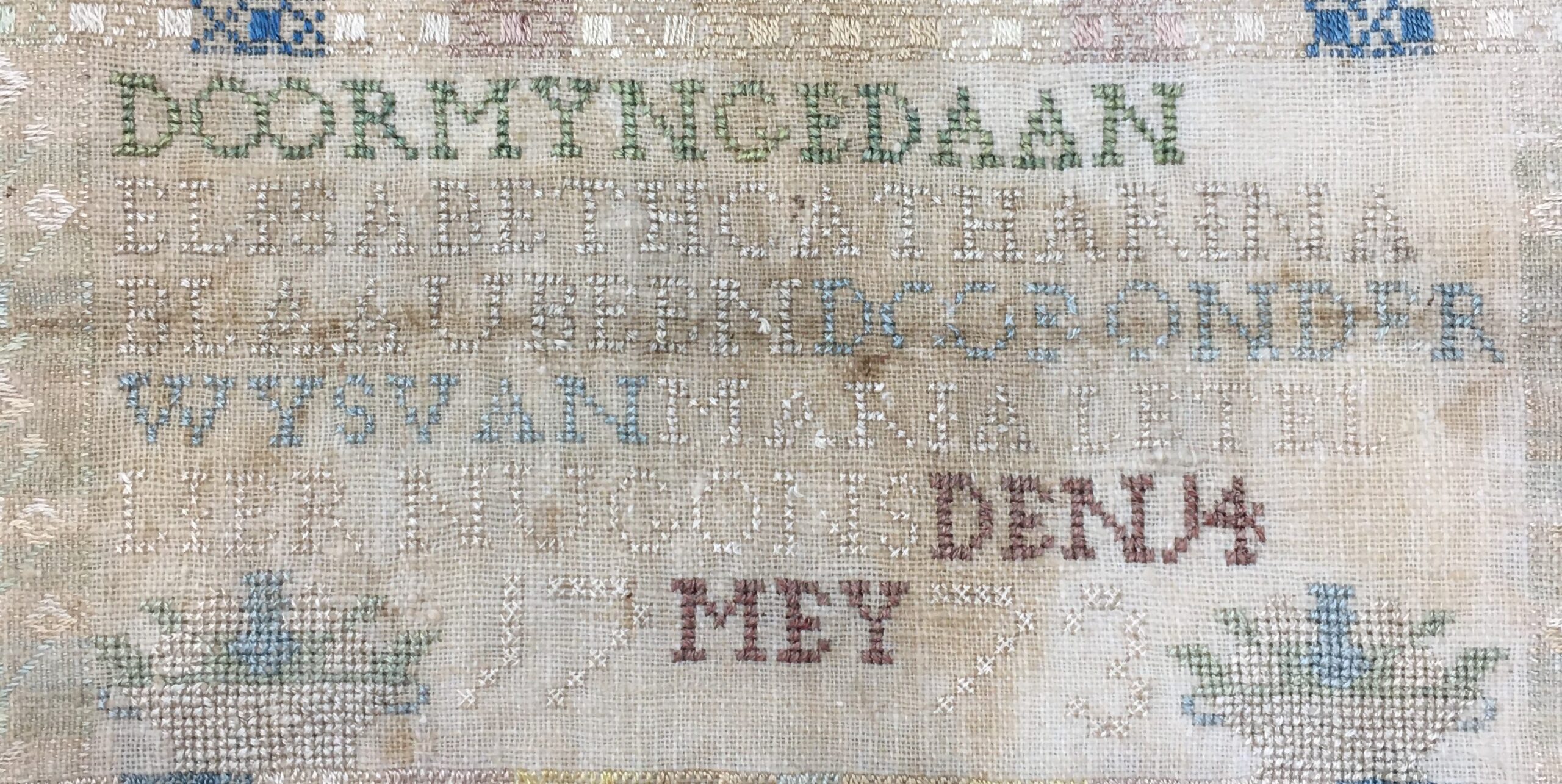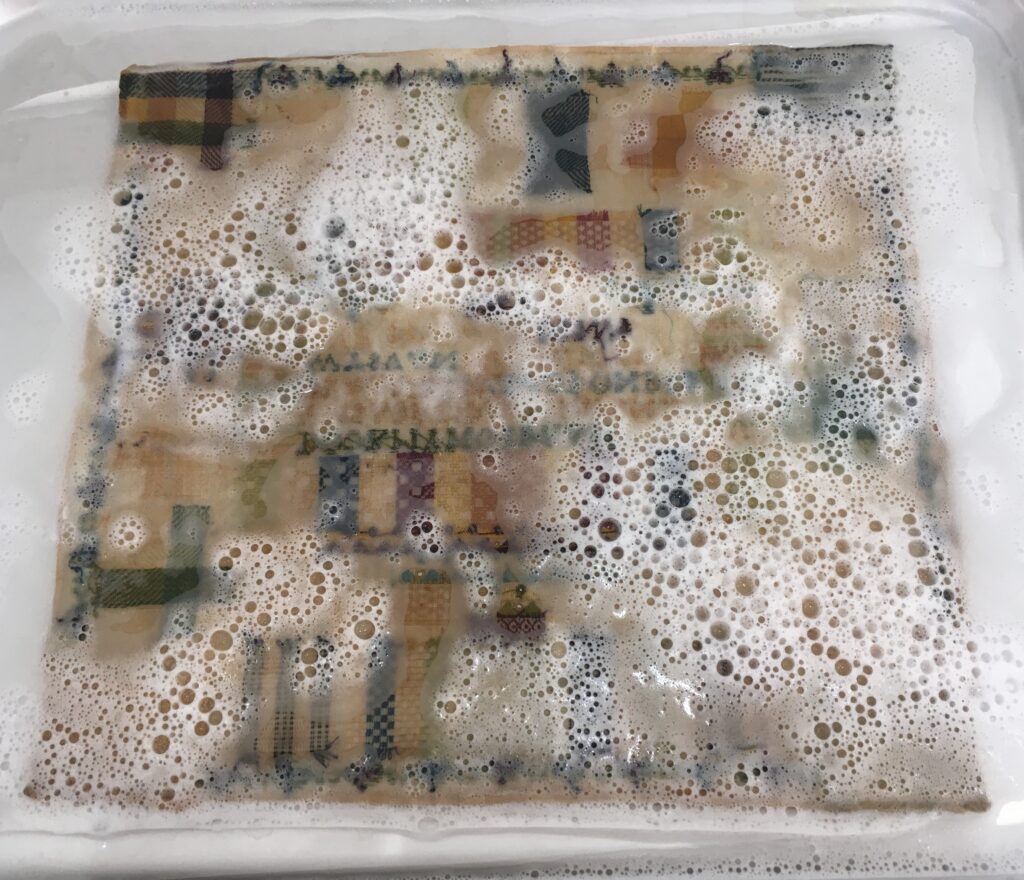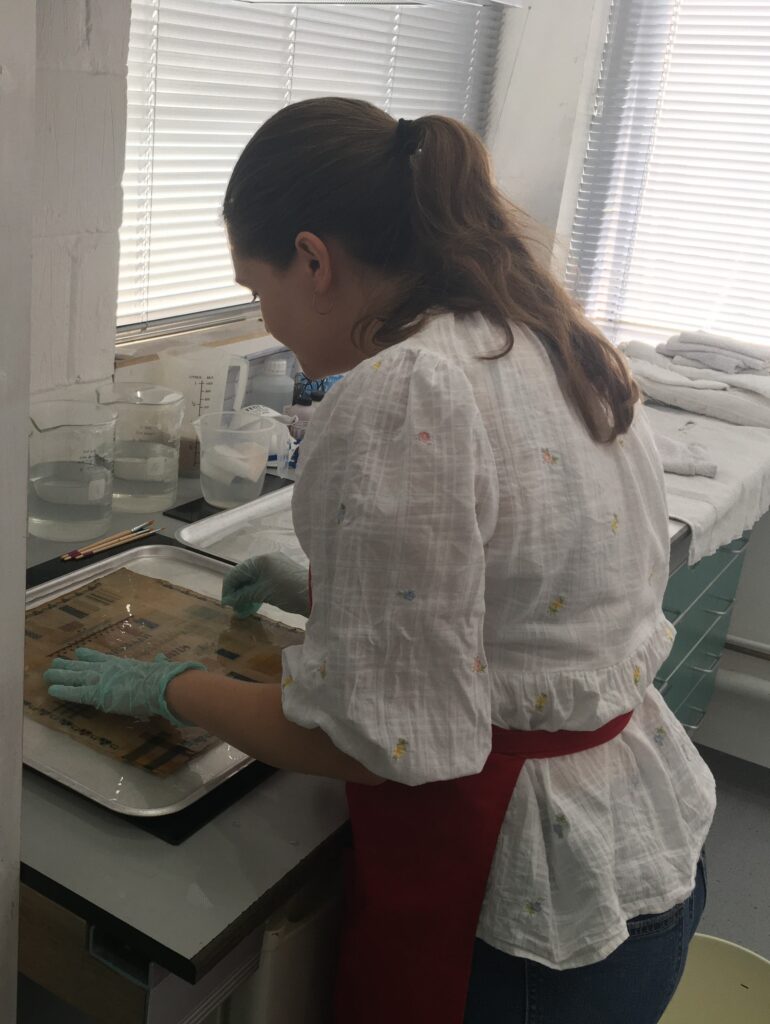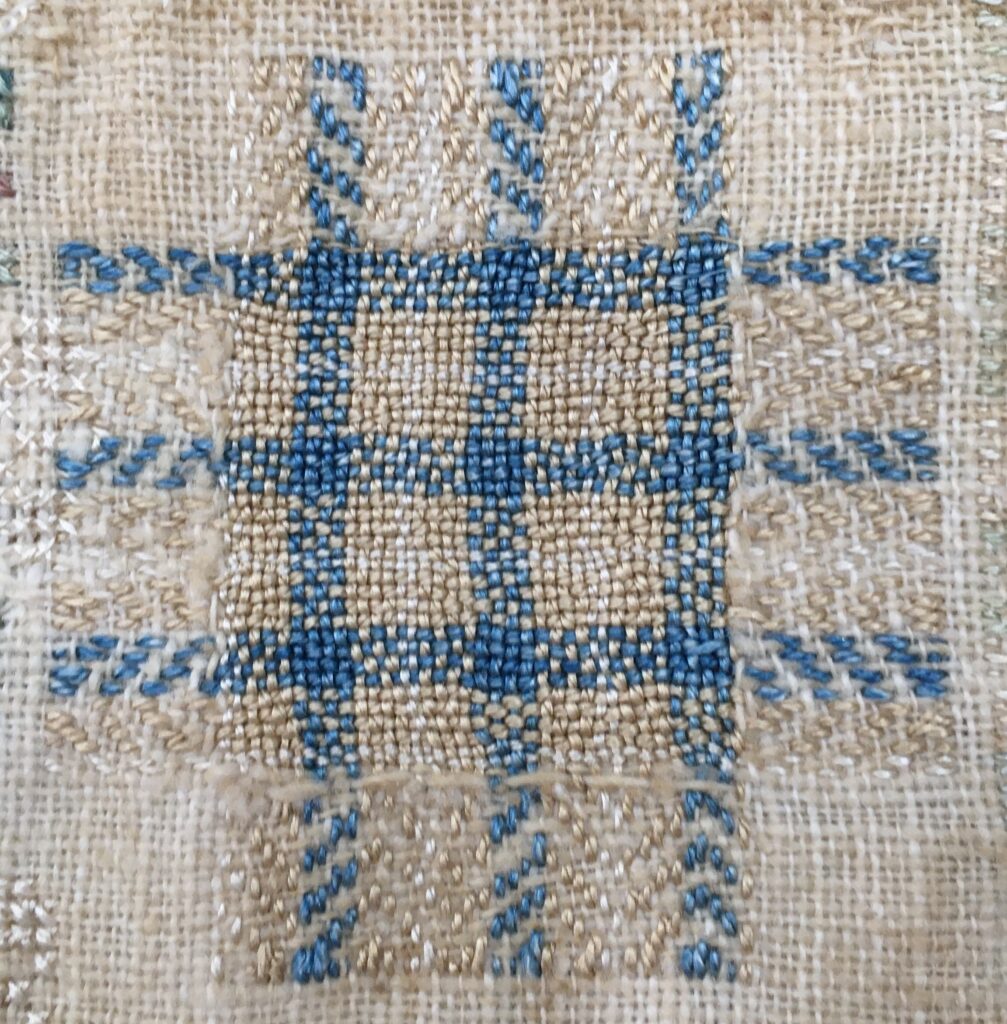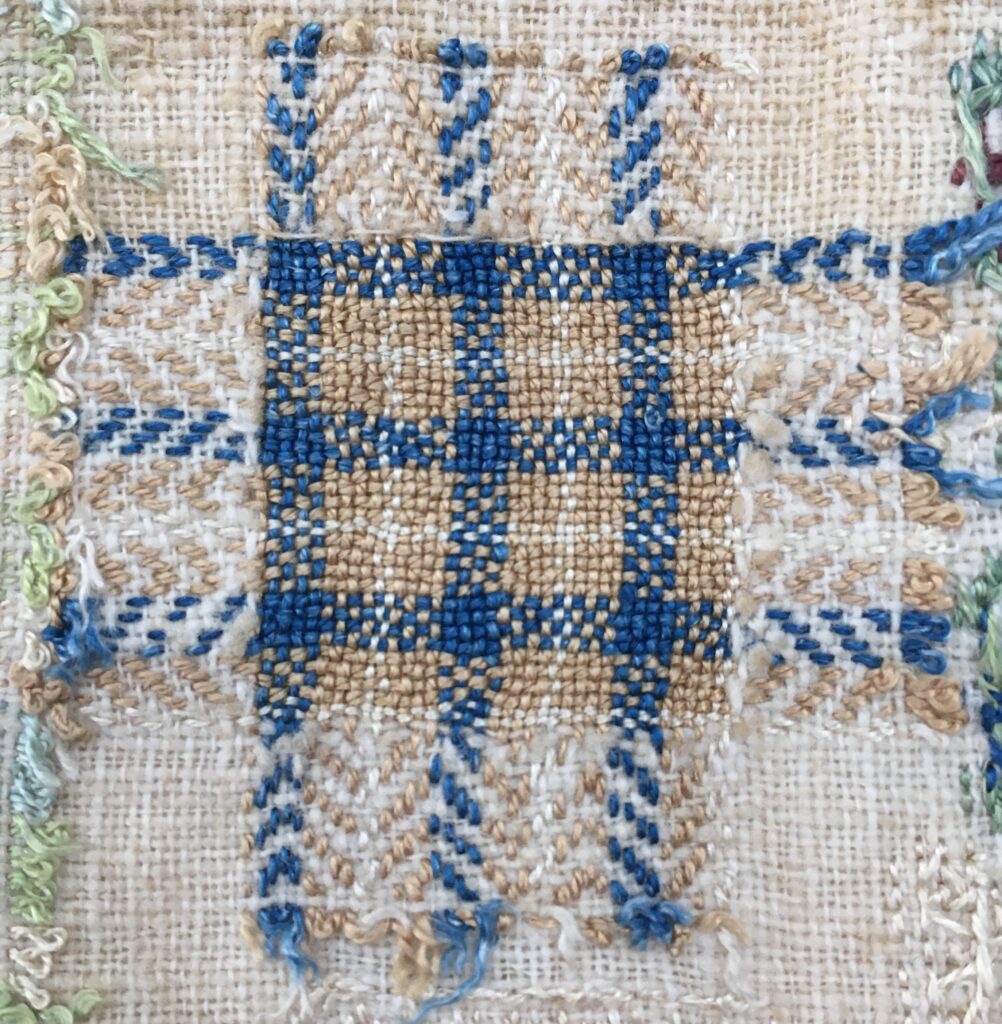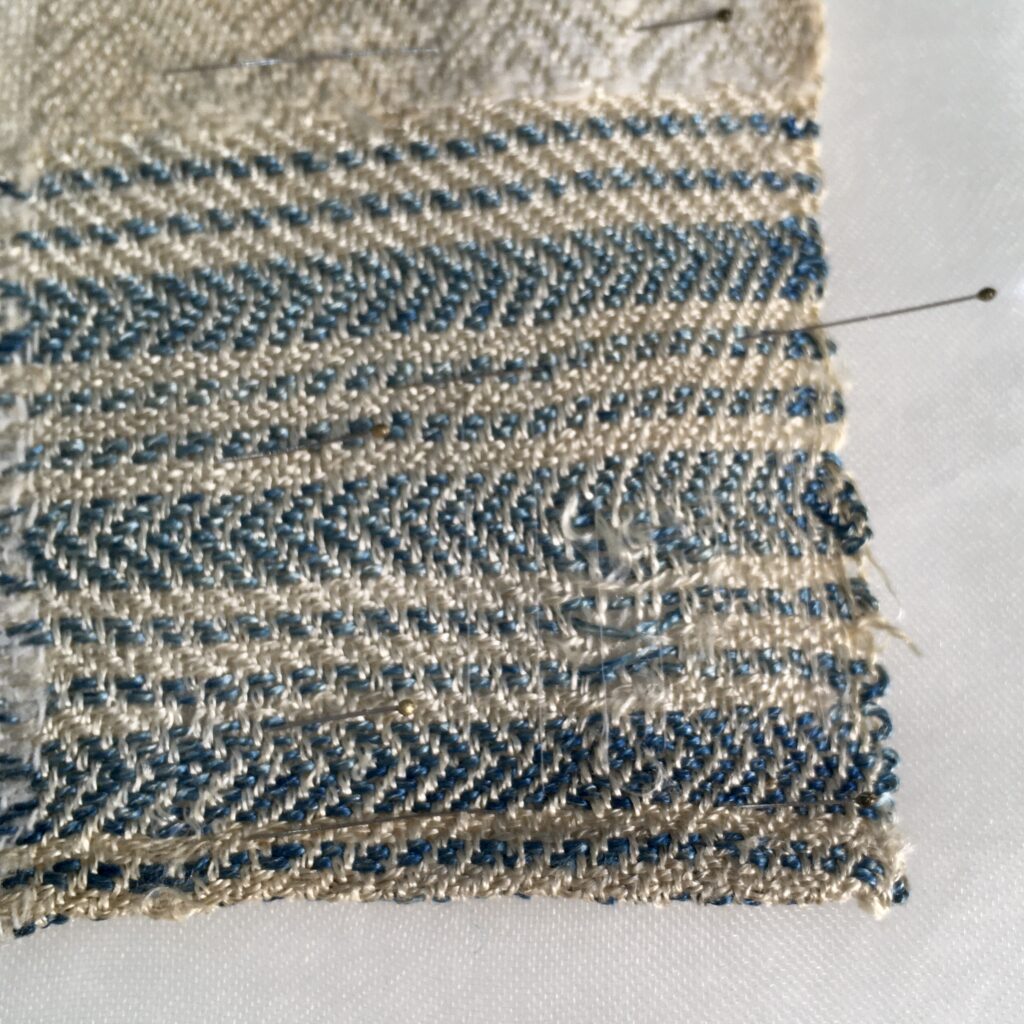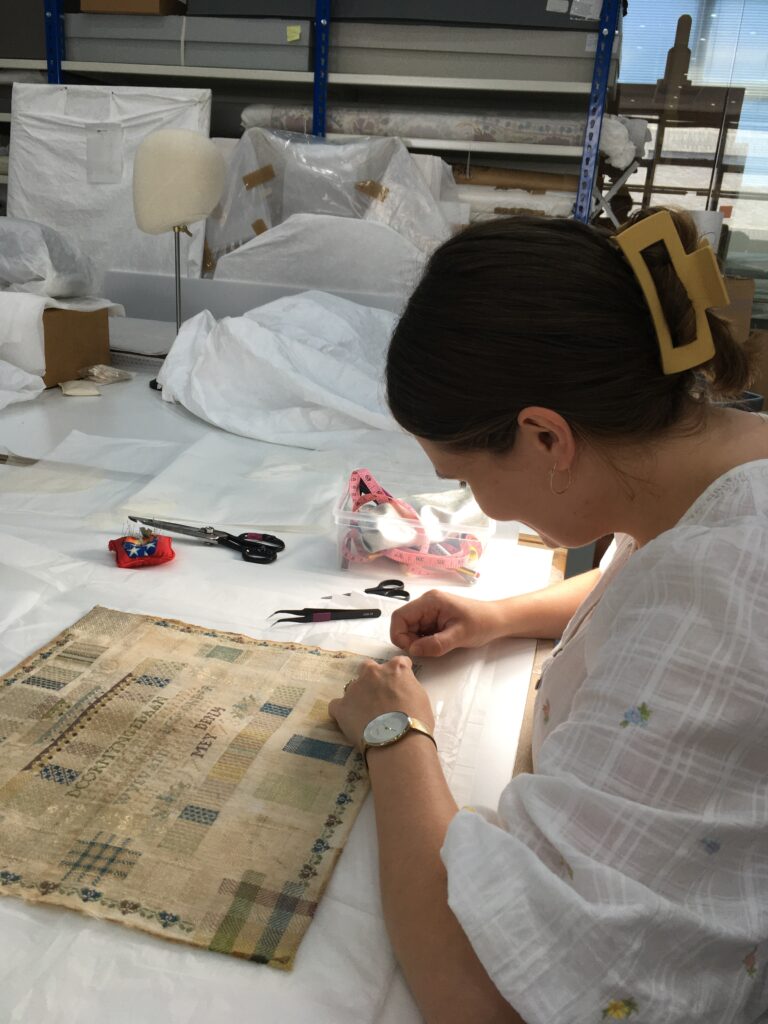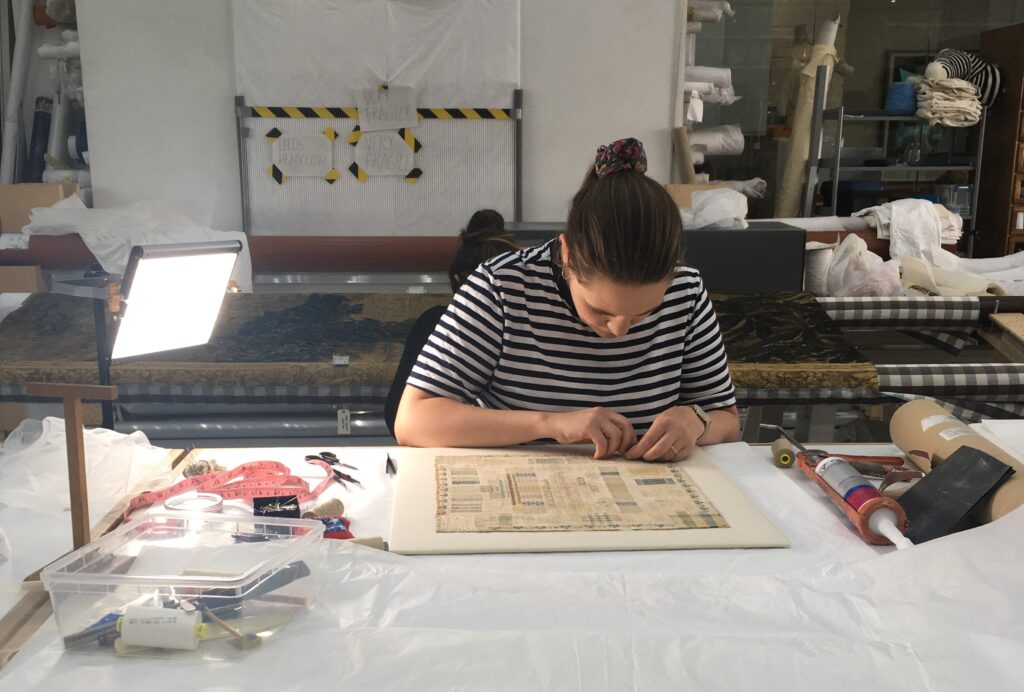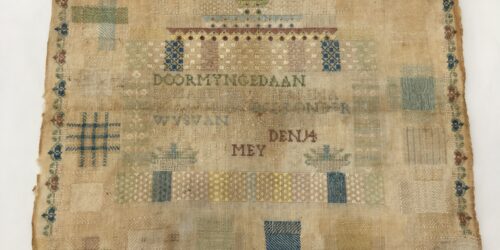
By Tabby Gibbs, Studio Intern, Summer 2022
My name is Tabby, and I was lucky enough to spend my summer as an intern with the team at the Zenzie Tinker Conservation studio in Brighton. As I am now beginning the final year of my MPhil in textile conservation at the University of Glasgow, I am reflecting back on my time at the studio, and there is one project in particular which I really loved working on. If you followed my posts for the ZTC Instagram account, you may recognise this beautiful Dutch Darning sampler from 1773. It belongs to a private client and was originally collected by her mother. She hoped to have it cleaned and supported in preparation for framing, and eventually to pass down to her family. I was very interested in this sampler because it demonstrated the maker’s darning skills, rather than, more commonly, embroidery skills.
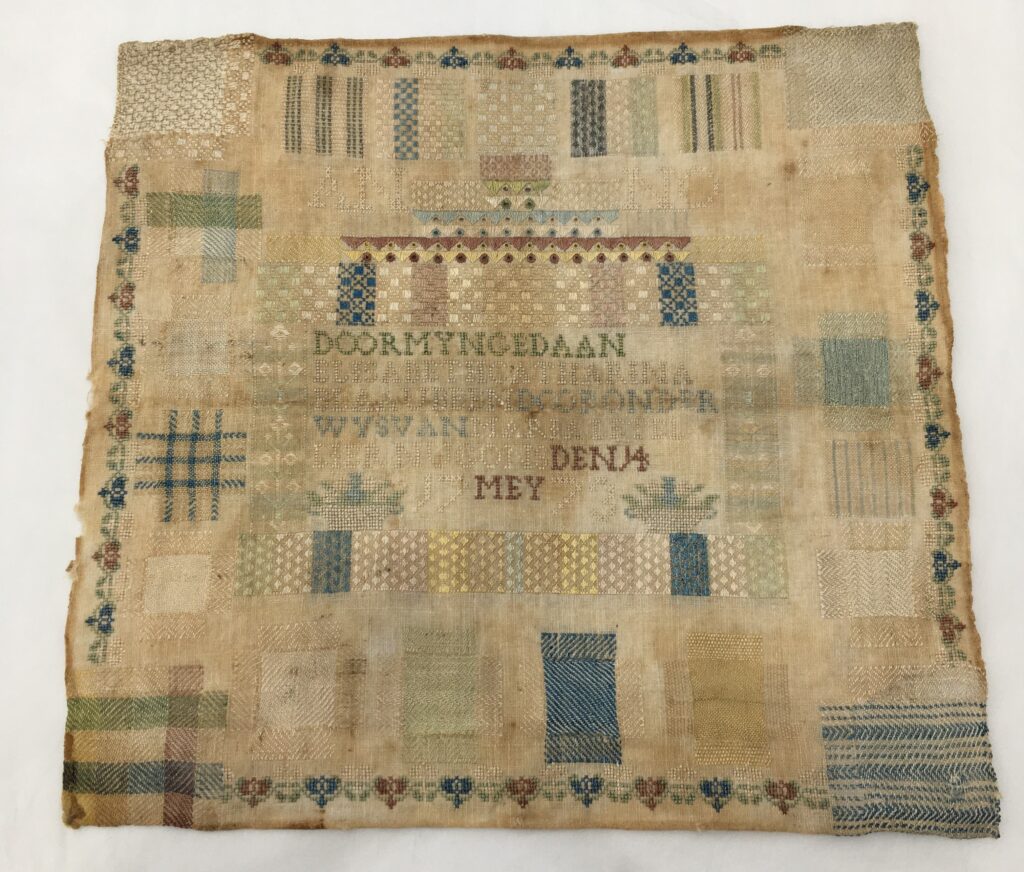
Darning samplers such as this were commonly used in the education of young women in the Netherlands in the 18th and 19th centuries. The aim was to teach them various methods to mend household items such as tablecloths[1], and using coloured silk thread helped beginners to understand the construction more easily when learning this technique[2]. Darning is carried out by creating a frame over a hole by anchoring thread in the fabric on the edges of the hole and then carrying it across the gap. Pattern darning is when running stitch is used to fill the gap and is effectively ‘woven’ in rows following the existing grain of the fabric. The stitch length can then be varied to produce different types of geometric design.
In this example, the ground fabric is a plain weave linen and many of the pattern darning exercises are arranged in cross shapes. They show different techniques. The light blue cross, for example, shows a method called Swiss darning, which gives the appearance of knitting[3]. There is also lettering created using cross-stitch and other embroidery stitches, including eyelet stitch, which surround the pattern darned areas.
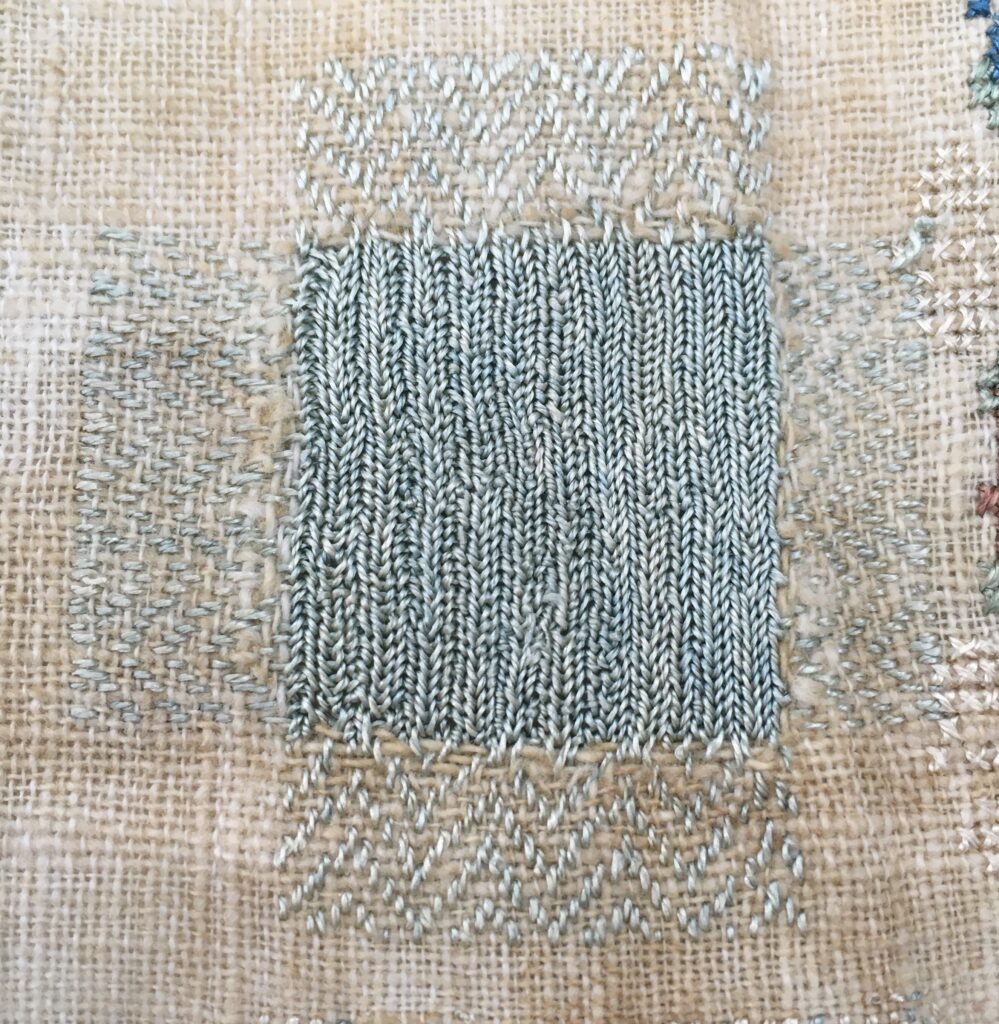
When it arrived at the studio the sampler had widespread yellowing due to degradation of the linen through exposure to light over the years. Around the edges there was remnants of an adhesive, probably animal glue, from where the sampler had been attached to a wooden board in its original frame. Some of the blue embroidery thread had been lost, and there was a small hole in the bottom right of the sampler where the darning was unravelling.
To begin treatment, I first mechanically cleaned the sampler and spot cleaned the adhesive to remove as much as possible prior to wet cleaning. After this, I tested all 13 different colours of embroidery thread to ensure none of the dyes would run in a wash bath. Once I had confirmed this, I washed the sampler, using a soft brush to aid reduction of the remaining adhesive. I managed to remove a significant amount, but unfortunately, in the lower corner particularly, it had become ingrained within the weave. I reduced it as much as possible without causing structural damage to the textile and darning itself. In situations like this, it is important to balance retaining the physical integrity of the textile with the reduction of staining, and I was very pleased with the result. The wet cleaning resulted in an overall brighter appearance with significantly reduced yellowing.
One feature of samplers is that the reverse is often more colourful than the front, due to less fading of the silk thread from exposure to light. At this point, I had discussions with the client about how they would prefer to frame the piece, as there are options which would enable both sides of the sampler to be seen, although they may not provide as much support for the weaker areas. After weighing up the choices, we decided to support the sampler on a custom-made padded board after using lines of support stitching and a silk crepeline patch to prevent further unravelling of the small hole in the bottom right corner. Prior to attaching the sampler to the board, I made sure to document the reverse of the sampler, so that this could still be enjoyed and studied even after it was covered.
I was delighted with the treatment, and was even happier to hear that the client had managed to translate much more of the text than I had been able to. The text says in Dutch:
Anno Door myn gedaan Elisabeth Catharina Blaaubeen Door Onder wys van Maria Letel lier nugons Den 14 17Mey73.
Which translates to:
Made by me Elisabeth Catharina Blaaubeen under the instruction of Maria Letellier completed on 14 May 1773.
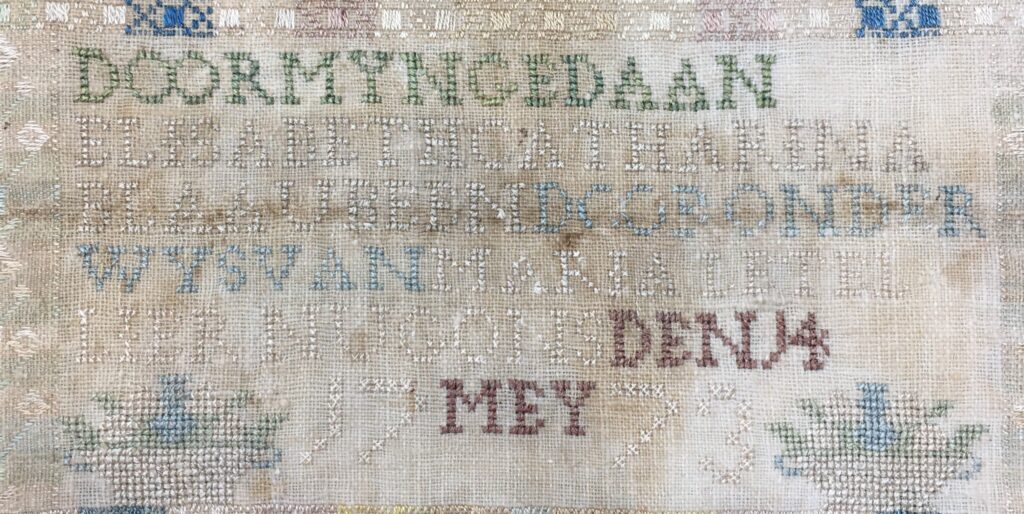
Further research using the records from Middelburg, where the sampler was made, reveal that Elisabeth was likely around 12 when she darned it, which makes it an even more amazing piece! It is additionally enlightening that the name of the teacher ‘Maria Letellier’ is included. This is an unusual feature, although there may have been some competition between teachers who wanted to show off their best pupils’ work[4], and Letellier was described as an ‘excellent teacher’[5].
As a conservator it is not everyday that you get the luxury to research in such depth the interesting history of textiles with which we come into contact, and it was a real an honour to have had the opportunity to treat this lovely piece. I would like to thank Zenzie and the whole team for their support and advice during this treatment, and a special thanks to the owner, Liesbeth, for all the information she shared with me and in trusting me to work on such a treasured object.
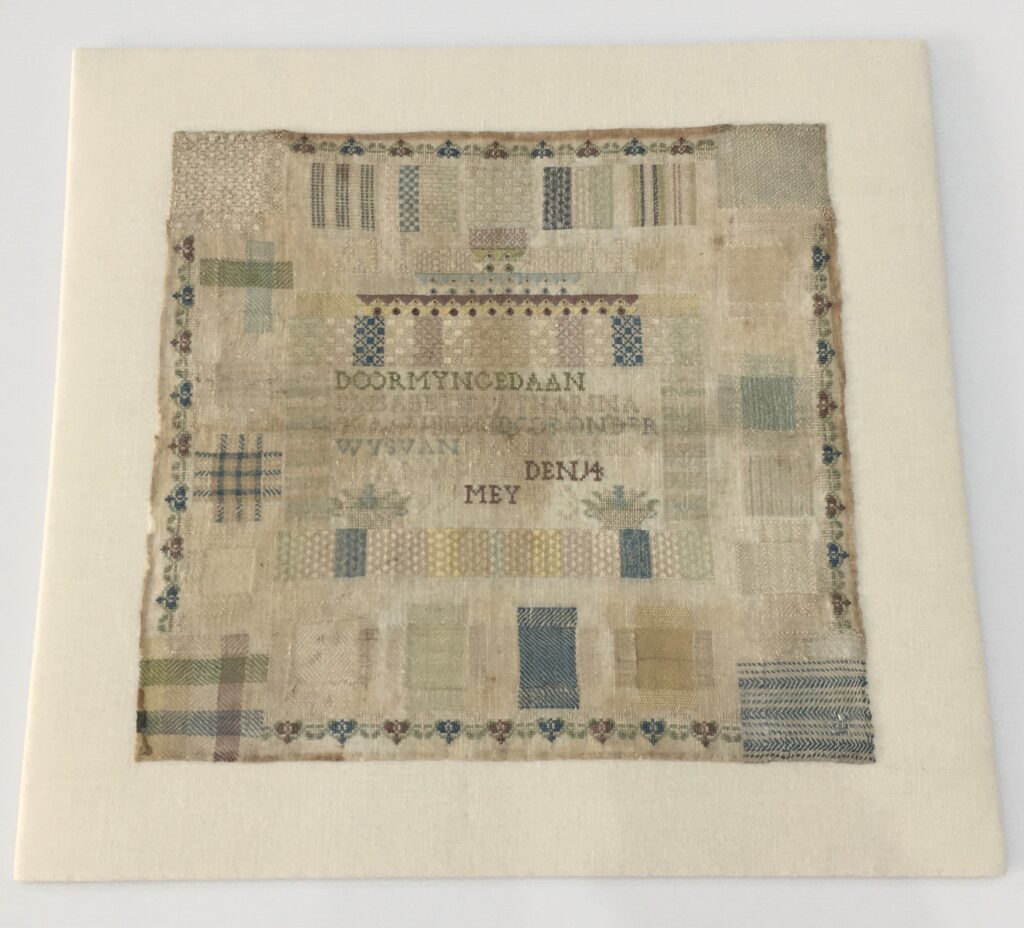
[1] “Darning Sampler,” TRC Leiden, last modified September 17, 2016, https://trc-leiden.nl/trc-needles/individual-textiles-and-textile-types/samplers/darning-sampler#:~:text=Darning%20samplers%20were%20made%20in,or%20in%20a%20school%20class.
[2] Tom van Deijnen, “An Unfinished Darning Sampler,” last modified July 17, 2015, https://tomofholland.com/2015/07/17/darning-sampler/.
[3] Sophia Caulfeild and Blanche Saward, The Dictionary of Needlework: An Encyclopaedia of Artistic, Plain, and Fancy Needlework (London: L. Upcott Gill, 1885), 145.
[4] Meg Andrews, “RARE Dutch Middelburg Darning Sampler 1766,” accessed October 6, 2022, https://www.meg-andrews.com/item-details/RARE-Dutch-Middelburg-Darning-Sampler/7794.
[5] “List of Middelburg Darning Samplers,” Ex Antiques Amsterdam, last modified January 19, 2018, https://www.exantiques.nl/single-post/2018/01/19/list-of-middelburg-darning-samplers.
References
Andrews, Meg. “RARE Dutch Middelburg Darning Sampler 1766.” Accessed October 6, 2022. https://www.meg-andrews.com/item-details/RARE-Dutch-Middelburg-Darning-Sampler/7794.
Caulfeild, Sophia and Blanch Saward. The Dictionary of Needlework: An Encyclopaedia of Artistic, Plain, and Fancy Needlework. London: L. Upcott Gill, 1885.
Ex Antiques Amsterdam. “List of Middelburg Darning Samplers.” Last modified January 19, 2018. https://www.exantiques.nl/single-post/2018/01/19/list-of-middelburg-darning-samplers.
TRC Leiden. “Darning Sampler.” Last modified September 17, 2016. https://trc-leiden.nl/trc-needles/individual-textiles-and-textile-types/samplers/darning-sampler#:~:text=Darning%20samplers%20were%20made%20in,or%20in%20a%20school%20class.
Van Deijnen, Tom. “An Unfinished Darning Sampler.” Last modified July 17, 2015, https://tomofholland.com/2015/07/17/darning-sampler/.
